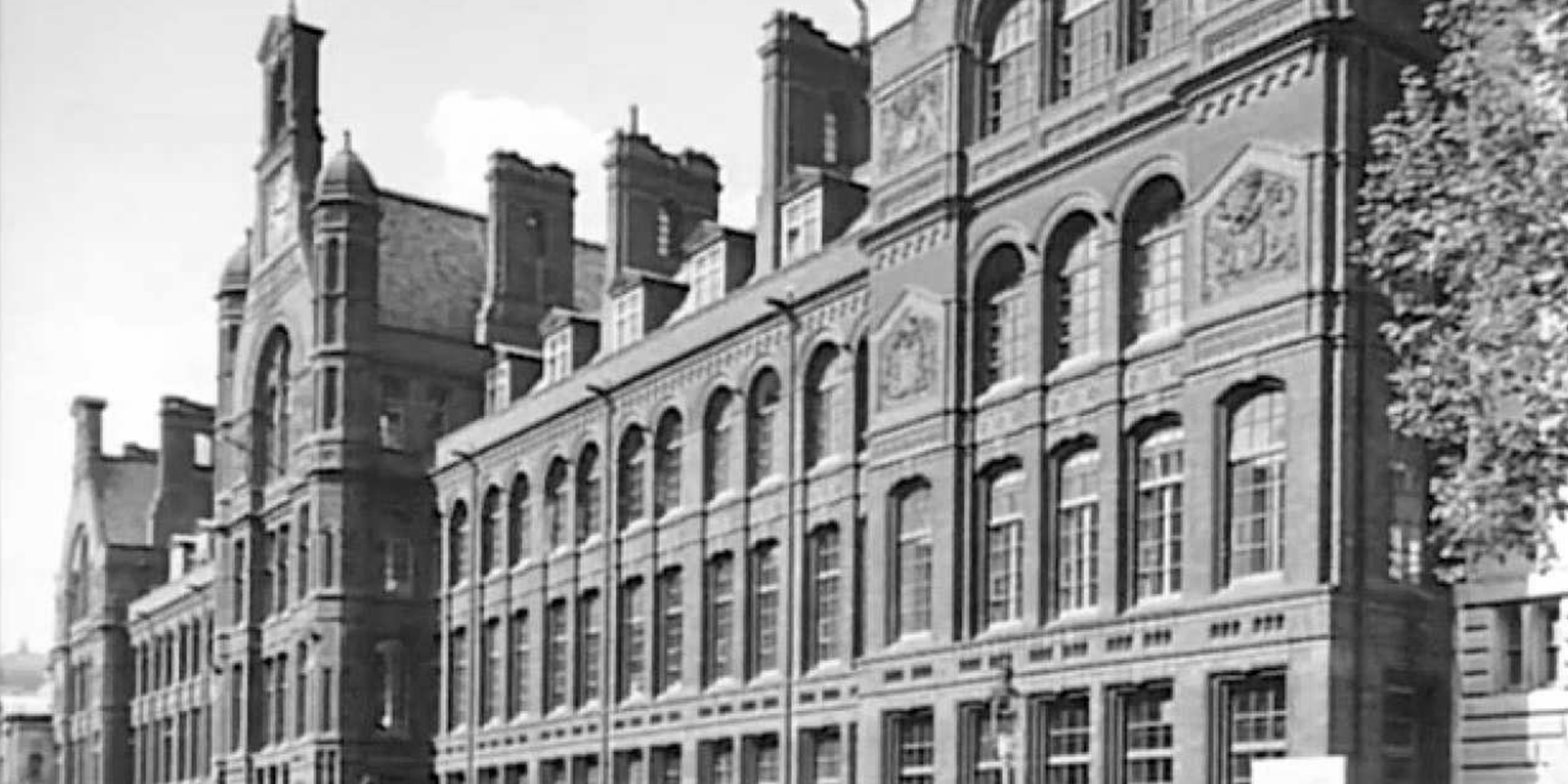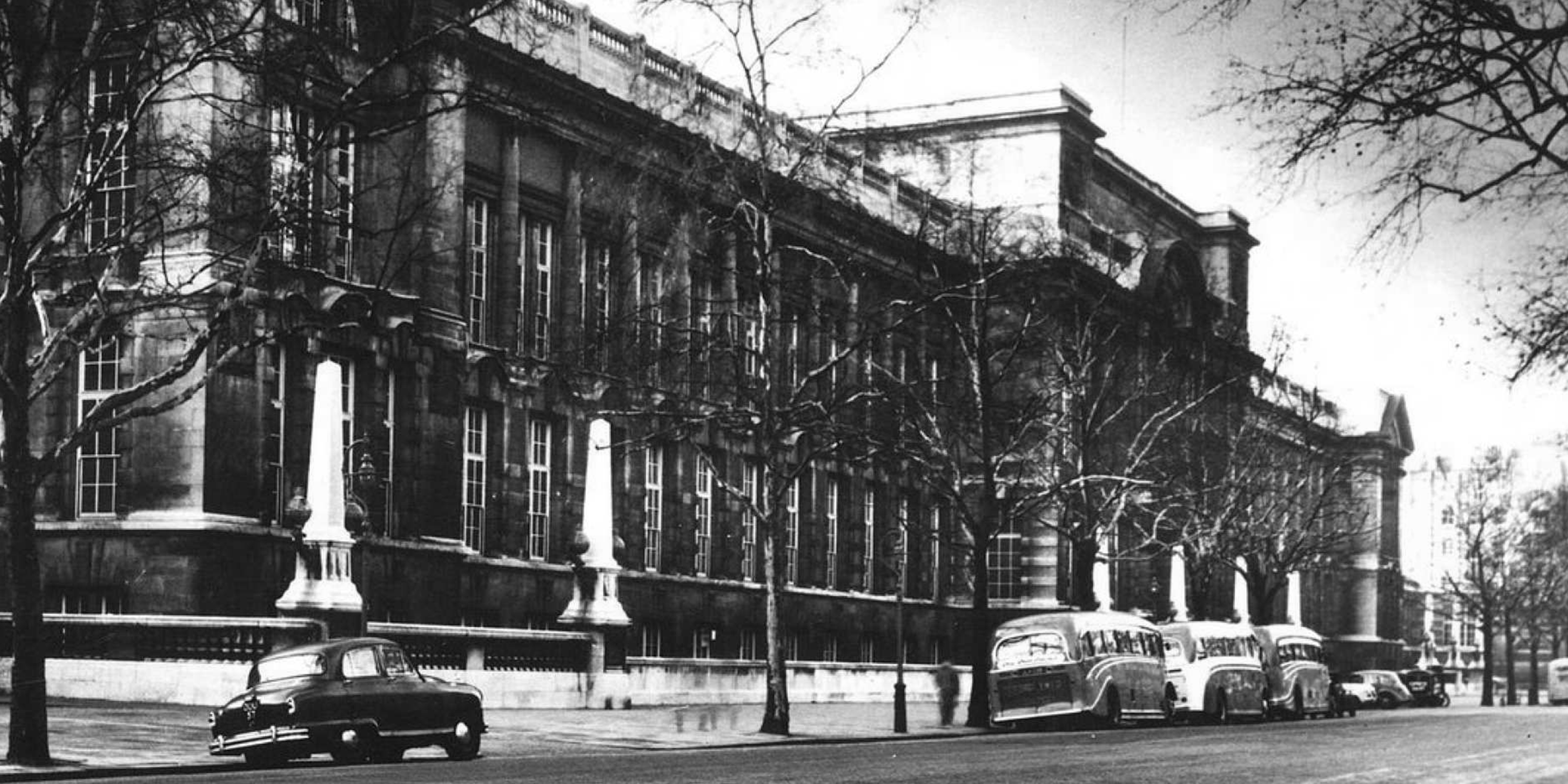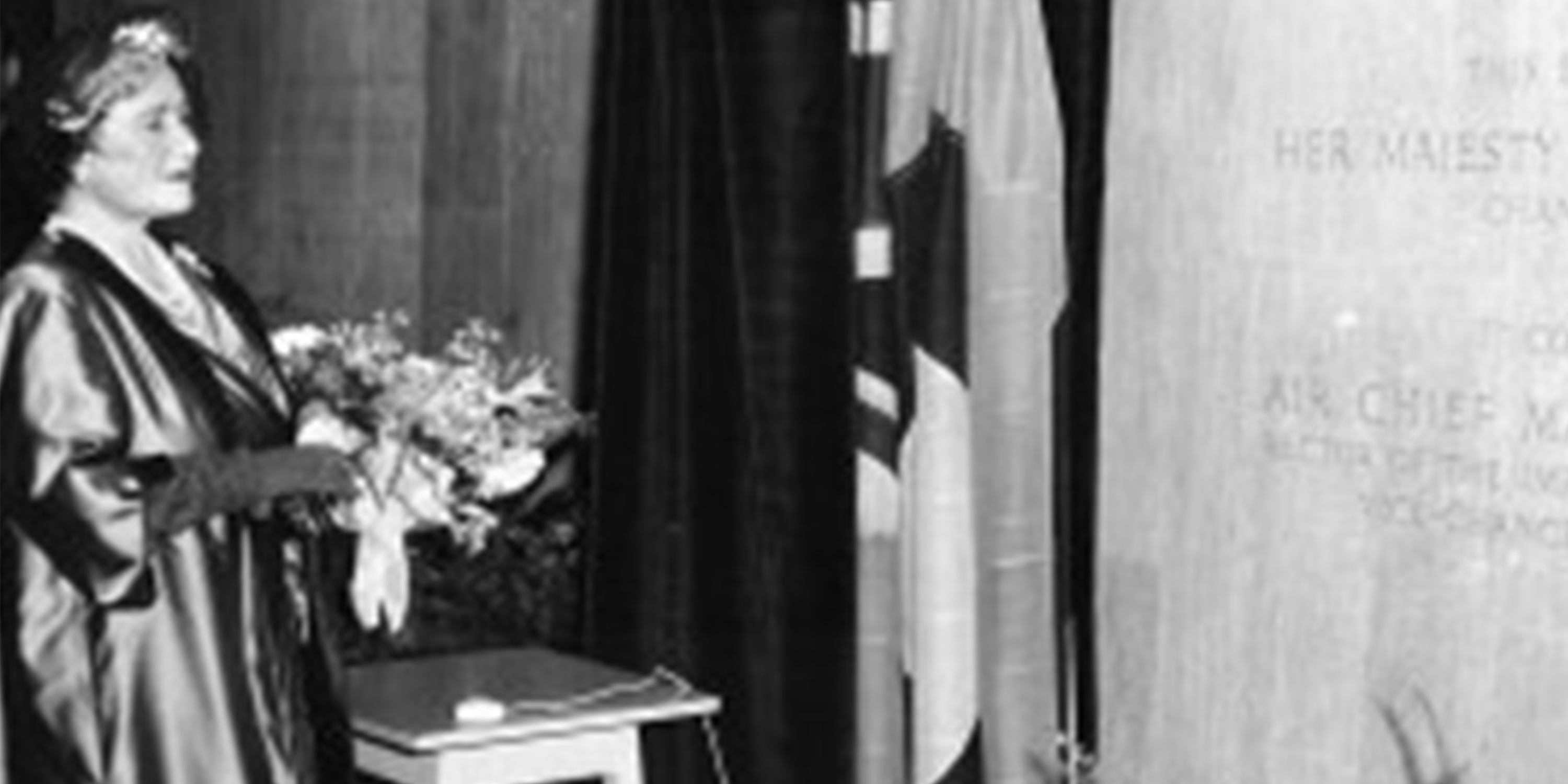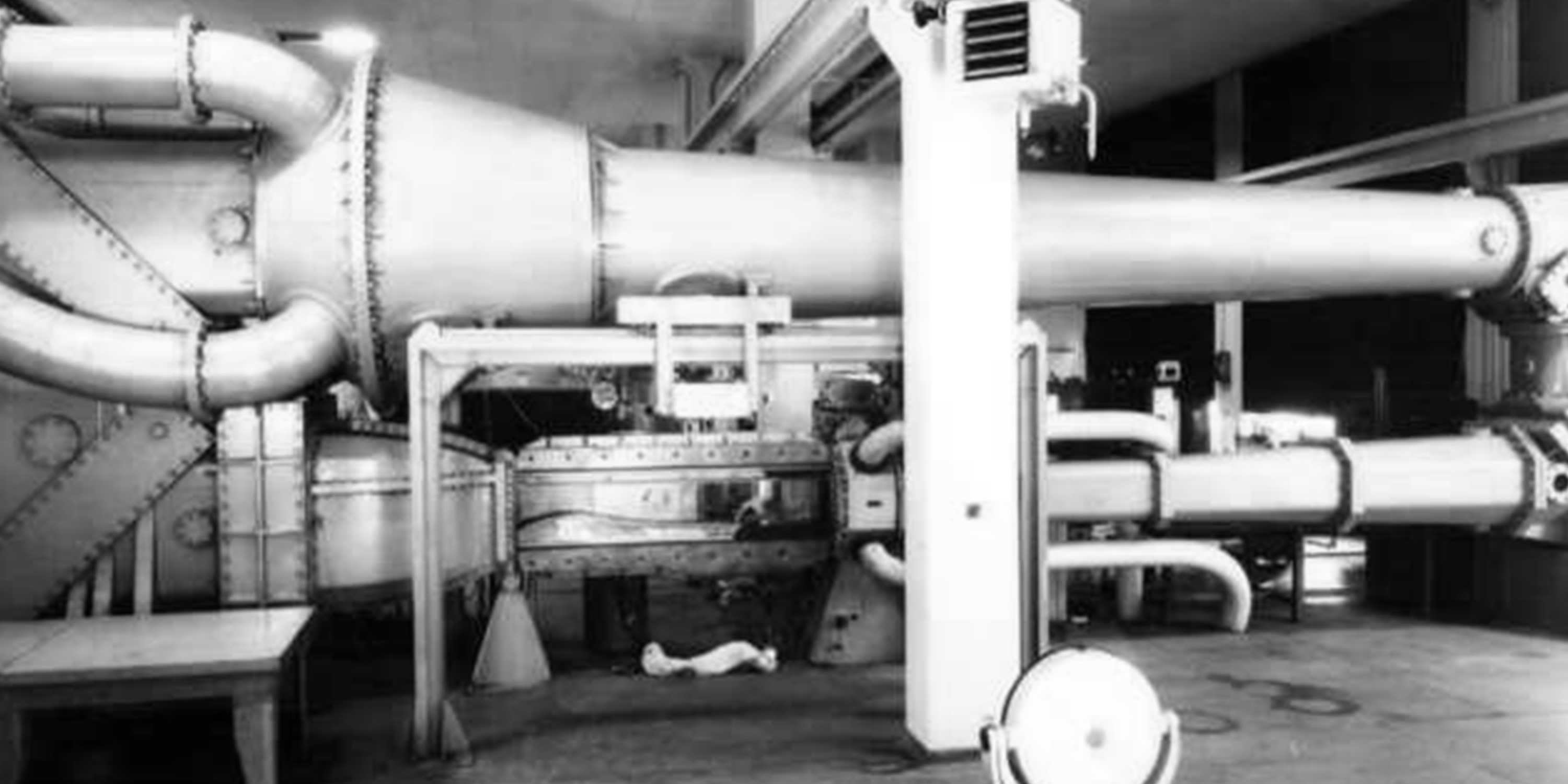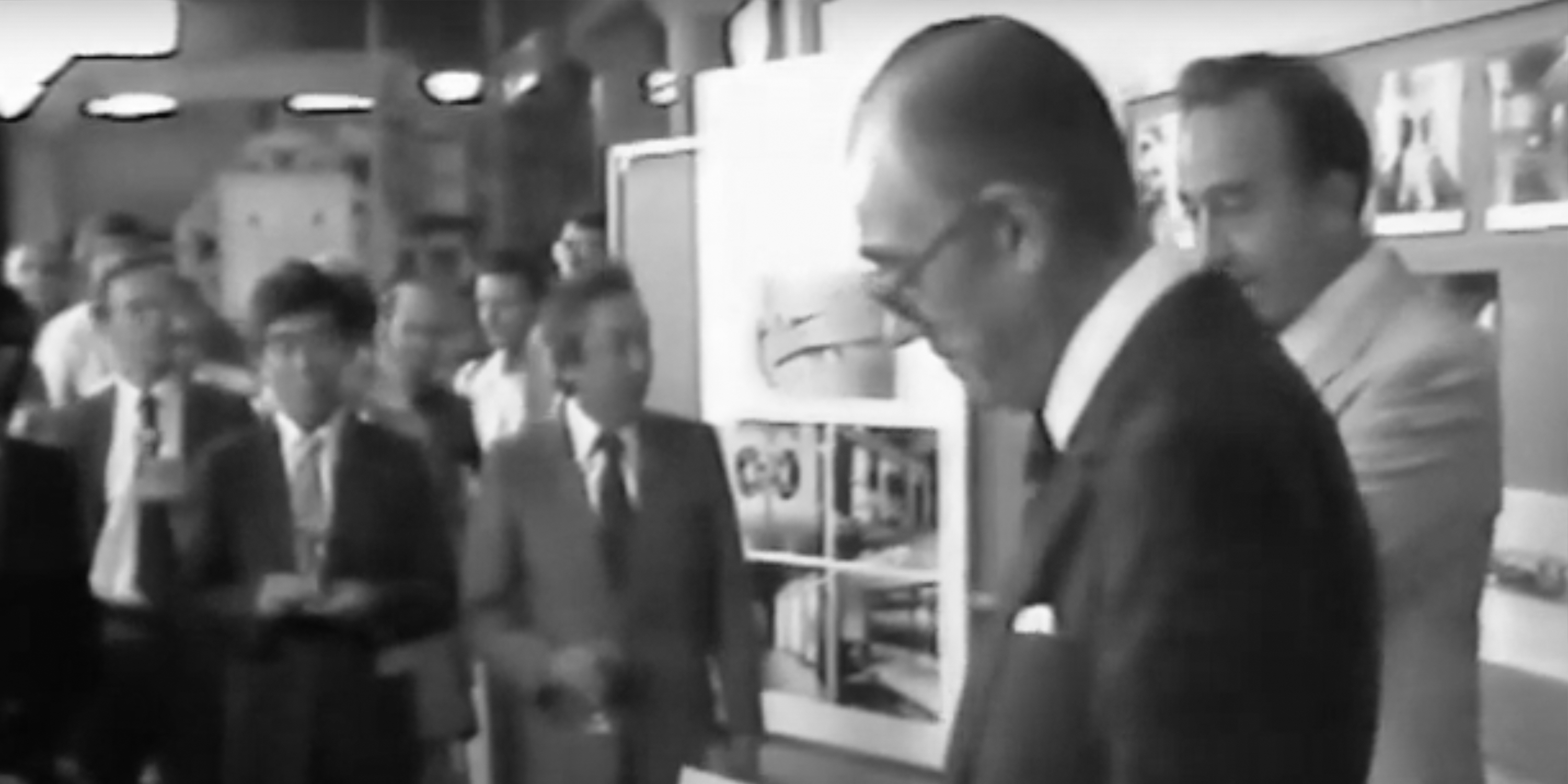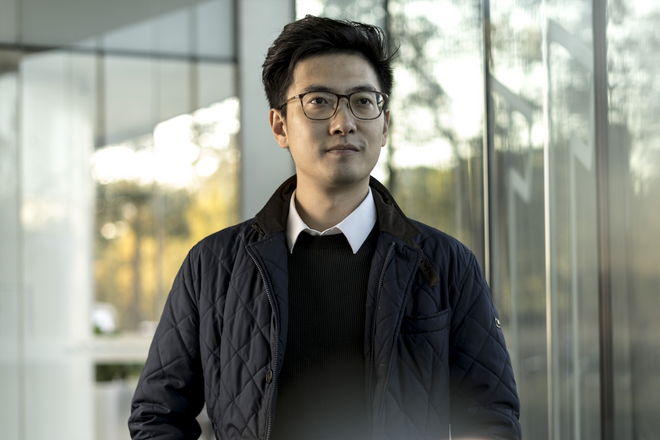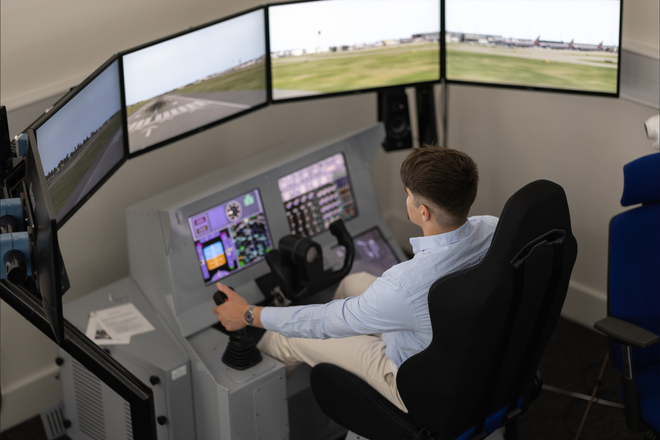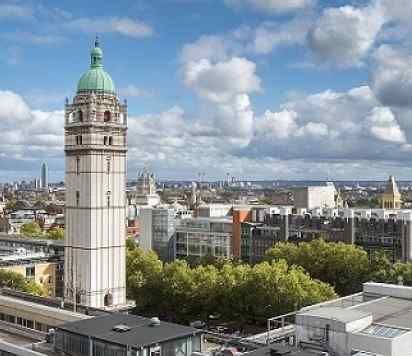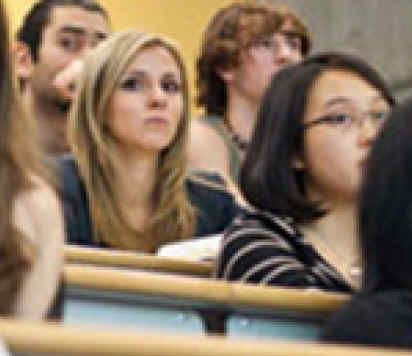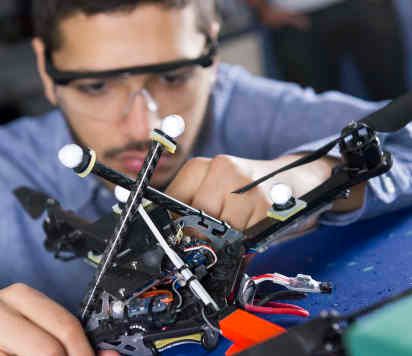History
1909 - 1920
1909: Professor Ernest Dalby, FRS (1862 – 1936), Dean of the City and Guilds College, attended the Exhibition of Aircraft in Paris to celebrate Blériot’s cross-channel flight. While there, he was given sets of lecture notes on aeronautics by a French Professor.
A sub-committee that was then set up at Imperial College recommended the creation of a series of short courses of advanced lectures related to Aeronautics and providing scholarships for research in the branches of Chemistry, Physics and Engineering related to Aeronautics. A full post-graduate course was also proposed.
1910: Courses in Aeronautics were given in the Physics Department in the 1909/1910 and 1910/1911 academic years. They covered "The Dynamics of Mechanical Flight", given by Sir G. Greenhill, FRS (1847 - 1927), "Wind Pressures", given by H.R.A Matlock and "Light Petrol Motors for Aerial Work" by Col. Holden.
1911: No lectures were given in the 1911/1912 academic year due to an inability to obtain lecturers.
1912: Lectures resumed, however, they were discontinued as many students who attended the courses were insufficiently prepared to take full advantage of them. This emphasised the necessity of having a preliminary three year course covering the background knowledge required.
1914: Imperial College’s advanced aeronautics diploma (DIC) course had trained a number of people who became engaged in war-related activities. Many of the early graduates worked at the Royal Aircraft Factory (later renamed as the Royal Aircraft Establishment).
1916: The City and Guilds College was ready to resume educating Aeronautical engineers. A syllabus was drawn up for a Diploma course in Aeronautical Engineering. Two students signed up for the course in 1916/1917.
1917: A reference to Aeronautics first appeared in the programme for 1917/1918, viz "Department of Mechanical Engineering and Automotive Power (including Aeronautical Engineering)".
1918: The Civil Aerial Transport Committee recommended two higher educational institutions to be funded to teach aeronautics, and one of them should be in London (the other was at Cambridge).
1919: The Air Board introduced a benefactor who offered £25,000 (about £1.6m in today's money) to the University of London for a new Chair. It was later revealed that the donation was given by Sir Basil Zaharoff to fund the Zaharoff Chair of Aviation. Dalby advised the council not to accept money unconditionally, but that it should be donated to found the Department of Aeronautics.
On 20 December, Sir Richard Glazebrook, FRS (1854 - 1935), accepted the Directorship of the Department of Aeronautics and was appointed the Zaharoff Chair of Aviation. Glazebrook studied Physics under James Maxwell and Lord Rayleigh. His research focused on electrical standards and aviation.
1920: On 24 March, Glazebrook completed a series of five lectures on the Aeronautics course in the newly founded Department of Aeronautics. Read the article on Aeronautics at the Imperial College that featured in the April 1920 edition of Nature magazine.
Sir Richard Glazebrook was succeeded by Sir Leonard Bairstow, CBE FRS FRAeS (1880-1963), Professor of Aerodynamics and Zaharoff Chair of Aviation. Bairstow's work focussed on the design of wind tunnels and aircraft and contributed much to the understanding of aircraft stability. He was also known for the Bairstow's method, an efficient algorithm to find roots of a real polynomial of any degree.
1921 - 1950
1923: The Department was based in the Royal College of Science and later moved into a building in Lowther Gardens.
1924: Under the leadership of Bairstow, the Department moved from Lowther Gardens into the Science Schools building on Exhibition Road. Part of the Department's work was carried out at the Royal Aircraft Establishment (RAE).
1925: A wind tunnel, housed in the basement of the Huxley building, came in to use. It was claimed to be the first university wind tunnel.
1938: Advanced courses in aerodynamics, aeroplane structures, meteorology and air navigation were offered. Many students were Royal Air Force (RAF) officers and numerous pioneers of the British aviation industry were ex-students of Imperial College.
1945: Sir Arnold Hall, FRS FRAes (1915 – 2000) was appointed as Zaharoff Chair of Aviation and Head of Department of Aeronautics, in succession of Sir Leonard Bairstow. Prior to joining Imperial College, Sir Arnold pursued research in aerodynamics under Sir Bennett Melvill Jones CBE AFC FRS (1887-1975) and Sir Geoffery Taylor, FRS OM (1886-1975). Sir Arnold was a specialist in jet propulsions and worked with Frank Whittle while at the RAE.
1949: Sir Arnold introduced a new undergraduate aeronautics course in which the students would spend their first two years studying mechanical engineering and only specialise in aeronautics in their 3rd year. He later headed the investigation into the Comet crash.
1951 - 1970
1951: A new aerodynamics laboratory, which included new wind tunnels, opened. Sir Arnold secured funding for the new laboratory.
1957: The completion of the Roderic Hill building, which included the construction of an an advanced aerostructures laboratory, that Sir Arnold had initiated plans for.
1952: Herbert Squire, FRS (1909-1961) was appointed as the Zaharoff Professor of Aviation and made the Head of Department, following the departure of Sir Arnold, who become the Director of the RAE. Professor Squire was an expert in aerodynamics and his research topics included jet propulsion, aircraft noise, seaplane aerodynamics and heating effects of high speed airflow.
In the academic year of 1951-52, the Department of Aeronautics had 69 undergraduate and 29 postgraduate students.
1955: John Hadji-Argyris, FRS (1913-2004) was given a Chair. He made major contributions to the understanding of the mechanics of complex structures and was one of the early pioneers of the finite element method.
1956: John Stollery, CEB, FREng (1930-2013) joined the department as lecturer and worked with Donald Campbell as part of the design team on the Bluebird car. Stollery built one of the first hypersonic gun tunnels in the country.
1957: The Department of Aeronautics moved into the newly completed Roderic Hill building. The Department was formally divided into two sections: Aerodynamics section and Aerostructures section, initiated by Argyris. Read the article on Aeronautics at the Imperial College of Science and Technology that appeared in the June 1957 edition of Nature magazine.
1962: Following the death of Herbert Squire in 1961. Paul Robert Owen, FRS FREng (1920-1990) took over departmental administrative duties while also working on the stability and control of aircraft and on the design of wings. A rotating acting headship with a complex division of power between Owen and Argyris was set up.
1963: Paul Robert Owen was made Head of Department of Aeronautics and was appointed the Zaharoff Chair of Aviation
1966: The Physiological Flow Unit was set up by Colin Caro, Paul Owen and Sir James Lighthill, FRS (1924-1998). This was an inter-departmental unit that applied the concepts of fluid mechanics to blood circulation. The unit's administration was part of the Department of Aeronautics.
1971 - 2000
1982: Glyn Davies (b.1933) succeeded Paul Robert Owen as the Head of Department of Aeronautics. His research focused on developing finite element models of realistic aircraft structures and understanding their failure mechanisms.
1985: Glyn Davies was appointed Professor of Aeronautical Structures in 1985.
1983: The Centre for Composite Materials at Imperial College, a UK first, commenced activities in October 1983. Professor Frank Matthews was appointed as the Director of the Centre, which was overseen by a steering committee chaired by Professor Don Pashley (Department of Materials).
1985: The Honda Wind Tunnel opened and was one of the world's most advanced wind tunnels at the time for studying road vehicle aerodynamics. Peter Bearman FREng (b.1938) and John Harvey (b. 1935) were responsible for the design of the tunnel and managed its construction. Honda's initial investment was £700,000 and later increased it in 1988 to around £1m. Watch the official opening of the tunnel.
1989: Michael Crisfield (1942–2002) was appointed as Chair of Computational Mechanics, endowed by Finite Element Analysis Ltd.
Peter Bearman FREng, Professor of Experimental Aerodynamics, succeed Glyn Davies as the Head of Department of Aeronautics. He introduced the 4 year MEng course for all undergraduate entrants to the Department. Professor Owen was still the holder of the Zaharoff Chair of Avaiation.
1990: Following the death of Professor Owen in 1990, Peter Bearman was offered the Chair but declined to accept.
1999: Michael Graham FREng (b.1942), Professor of Unsteady Aerodynamics, succeeded Peter Bearman as the Head of Department of Aeronautics.
2001 - 2020
2003: Richard Hillier (b.1946), Professor of Compressible Flow, succeeded Michael Graham as Head of Department.
2009: Ferri Aliabadi, Professor of Aerostructures and Zaharoff Professor of Aviation, succeeded Richard Hillier as the Head of Department of Aeronautics and accepted the Zaharoff Chair of Avaiation, which had been vacant for 19 years.
2012: The start of the Aeronautics and Mechanical Engineering Project (AMP), which would see the renovation of the City & Guilds Building into a new home for the Department of Aeronautics.
2014: The AMP project included co-location of mechanical testing facilities of the departments of Aeronautics and Mechanical Engineering into the Dynamic Forming and Fracture Laboratory.
A £1.25 million arena for flying the next generation of aerial robots was constructed, thanks to a generous donation from Aeronautics alumnus Mr Brahmal Vasudevan. The Brahmal Vasudevan Aerial Robotics Lab showcases Imperial’s outstanding abilities and inspire future aeronautical engineers.
2016: The Composites Suites of the Department moved into the City & Guilds Building.
2017: September saw the final move of the whole Department into the City & Guilds Building.
Professor Paul Robinson, Professor of Mechanics of Composites, succeeded Ferri Aliabadi as the Head of Department.
2018: The Department marked a hundred years since Aeronautics was first studied at Imperial College. To mark the centenrary, staff, students and alumni looked proudly back at work and achievements, while also planning ahead for an exciting future.
2021 - Present
2022: 30 May, the Department launched the Brahmal Vasudevan Institute for Sustainable Aviation that will pioneer the breakthroughs and technologies needed to support the aviation industry’s transition to zero pollution. The institute is supported by aa £25 million philanthropic donation from Aeronautical Engineering alumnus Brahmal Vasudevan, Founder and CEO of private equity firm Creador, and his wife Shanthi Kandiah, founder of legal firm SK Chambers.
Heads of Department over the years
- Richard Glazebrook, 1919-1923
- Leonard Bairstow, 1923-1943
- Arnold Hall, 1943-1951
- Herbert Squire, 1951-1961
- Paul Owen, 1961-1982
- Glyn Davies, 1982-1989
- Peter Bearman, 1989-1999
- Michael Graham, 1999-2003
- Richard Hillier, 2003-2009
- Ferri Aliabadi, 2009-2017
- Paul Robinson, 2017-2022
